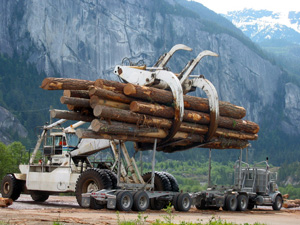 Using British Columbia as an example, the following is to give you an idea of the complexity of the work and planning undertaken by companies when complying with Canadian forest laws and the legislated supervision framework ensuring a high degree of confidence throughout.
Using British Columbia as an example, the following is to give you an idea of the complexity of the work and planning undertaken by companies when complying with Canadian forest laws and the legislated supervision framework ensuring a high degree of confidence throughout.
In BC, with 95% crown land, there is much to be done before harvesting can begin:
- Forest and natural resource inventories of the land base
- Public input and consultations on timber supply review and determination of Annual Allowable Cut by the Chief Forester
- Tenure licenses issued by Government
- Forest management planning taking all values into consideration – starts 5-10 years in advance of being able to harvest a cut block.
- Licensees are required to develop a Forest Stewardship Plan (up to a 5 yr term) that document how activities will be consistent with objectives set by government for soils, timber, wildlife, water, fish, biodiversity, recreation resources, visual quality and cultural heritage resources.
- Before each plan is approved by government, licensees must invite and consider public and First Nations comments.
- Years 5-10 prior to = overall inventory planning for all resource considerations
- Forest Stewardship Plan = receives approval by Government. The results, strategies, measures and stocking standards in the approved FSP become legal obligations in addition to practice requirements specified in regulation
- Year 5 prior – detailed planning for development within the approved FSP’s forest development units – inventories and resource assessments carried out.
- Year 4 prior – resource inventories and assessments completed, detailed plans including road layout design for road development, harvest block layout, site plan and silvicultural prescription.
- Year 3 prior – detailed cutting permit and road permit are submitted for government approval. Government approved cutting permit, road permit, road use permit scale site authorization, and issuance of Timber Mark.
- Year 2 prior – mainline roads are built into the timber development areas.
- Year 1 prior – roads into harvest blocks are built,
- Year 0 – harvesting, timber transportation and scaling. Stumpage and royalties (taxation) paid to government and mandatory reforestation obligation begins.
- Reforestation legal obligation remains in place until trees are “free-to-grow” (up to 20 years post-harvest) above brush and all other competition to FSP approved stocking standards.
In BC, as is the case in the rest of Canada, First Nations (Aboriginal) rights are protected under Canada’s Constitution. The effect of this recognition is that existing aboriginal rights must not be unjustifiably infringed by the resource development activities of the Crown (government) or its licensees. The Crown (both Federal and Provincial) also has a duty to consult with Aboriginal peoples in circumstances where Crown conduct may adversely affect Aboriginal rights. The consultations must be meaningful and conducted in good faith. In certain cases, the consultation process may result in a duty to accommodate Aboriginal interests (e.g., changes to the design of a project, economic benefits such as resource sharing and job creation, and community benefits). Examples of when the Government has an obligation to consult with First Nations include; prior to the approval of forest development plans and prior to issuing cutting permits to forest licensees.
That is just the condensed version, to give you an idea of the complexity! Further, the movement of all logs is monitored for Government scaling purposes and only after completion of scaling and harvest billing are the logs free to be distributed for first conversion and entry into the wood supply chain.
Supplementary information
The Certification Canada web site provides information on the most recent data available on the level of certification in Canada’s forests and statistics at national and provincial level in relation to the three certification systems – CSA and SFI (both endorsed by PEFC) and FSC – currently in operation in Canada.
Both FSC and PEFC are in the process of aligning their chain of custody standards with due diligence requirements of the EUTR.

